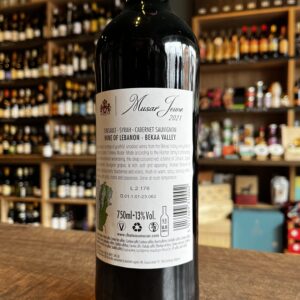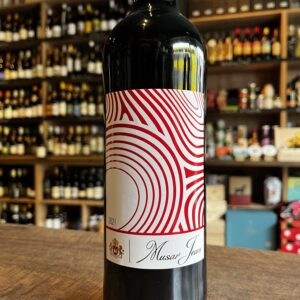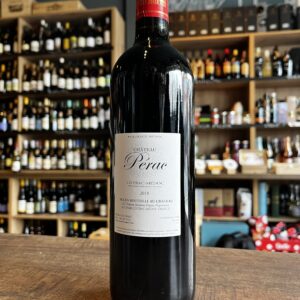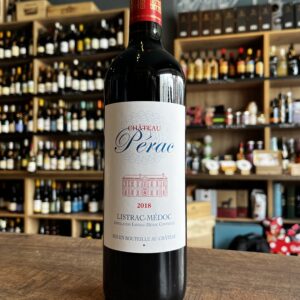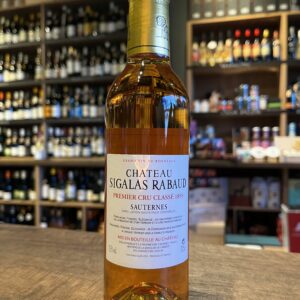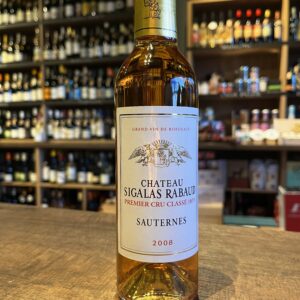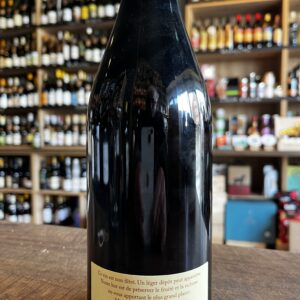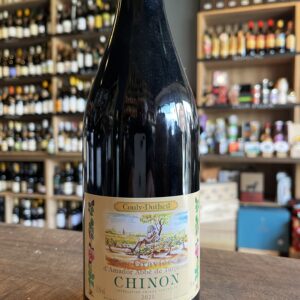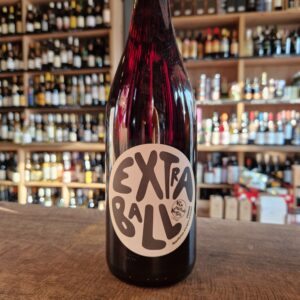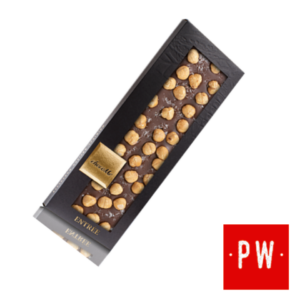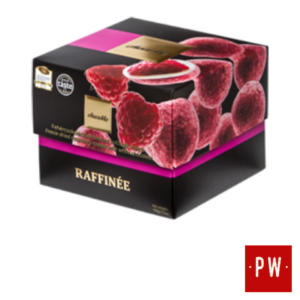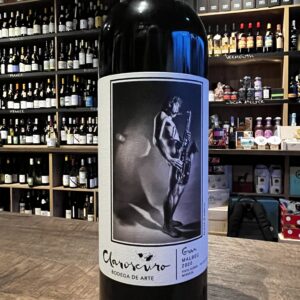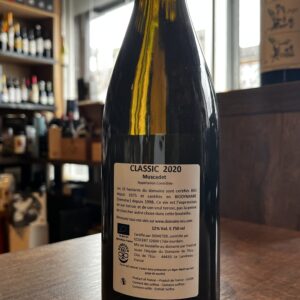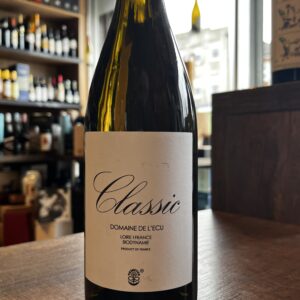-
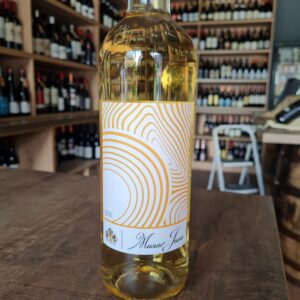 Château Musar is located in the Bekaa Valley, in Lebanon. It was created by Gaston Hochar in 1930 when he was only 20 years-old and inspired by Lebanon’s 6,000-year winemaking tradition and his travels in Bordeaux. Serge Hochar, his son, started producing wines at the end of 1950. His brother, Ronald, joined at the beginning of 1960. In 1975, 97% of the production was sold locally. It picked up after the Bristol Wine Fair of 1979 and, in 1990, at the end of the civil war, the export accounted for 97% of the production. The 3rd generation of the Hochar family started joining in 1994 and is still a family-run-business. Musar Jeune White is an unoaked blend of Viognier, Vermentino, Chardonnay from youthful Bekaa Valley vines. Crisp and aromatic, this eclectic blend of French and Italian varieties has its own distinct personality – passionfruit, apples, elderflowers – and a dry, refreshing finish. No need to decant; enjoy chilled (10-12°C) with grilled fish, herb-scented roast chicken, seafood salads and spicy oriental dishes. All their wines are Organic.
Château Musar is located in the Bekaa Valley, in Lebanon. It was created by Gaston Hochar in 1930 when he was only 20 years-old and inspired by Lebanon’s 6,000-year winemaking tradition and his travels in Bordeaux. Serge Hochar, his son, started producing wines at the end of 1950. His brother, Ronald, joined at the beginning of 1960. In 1975, 97% of the production was sold locally. It picked up after the Bristol Wine Fair of 1979 and, in 1990, at the end of the civil war, the export accounted for 97% of the production. The 3rd generation of the Hochar family started joining in 1994 and is still a family-run-business. Musar Jeune White is an unoaked blend of Viognier, Vermentino, Chardonnay from youthful Bekaa Valley vines. Crisp and aromatic, this eclectic blend of French and Italian varieties has its own distinct personality – passionfruit, apples, elderflowers – and a dry, refreshing finish. No need to decant; enjoy chilled (10-12°C) with grilled fish, herb-scented roast chicken, seafood salads and spicy oriental dishes. All their wines are Organic. -
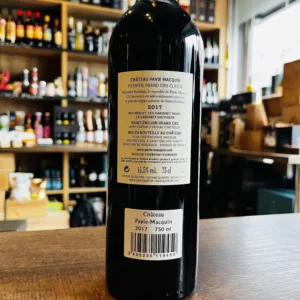
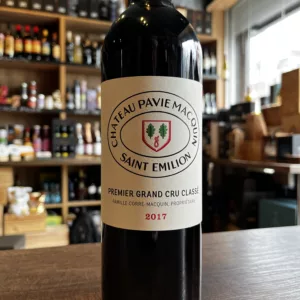 The 2017 Pavie Macquin is a rich, deep and super-expressive wine with remarkable persistence. As always, Pavie Macquin is a potent Saint-Émilion, but the 2017 has terrific energy as well. In 2017, Pavie-Macquin is not as forthcoming in its youth as it can be, and is going to need a few years in bottle to truly come together
The 2017 Pavie Macquin is a rich, deep and super-expressive wine with remarkable persistence. As always, Pavie Macquin is a potent Saint-Émilion, but the 2017 has terrific energy as well. In 2017, Pavie-Macquin is not as forthcoming in its youth as it can be, and is going to need a few years in bottle to truly come together -
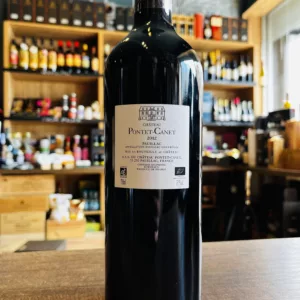
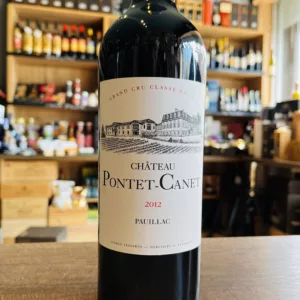 Designated a Fifth Growth in the 1855 Classification, Pontet-Canet has exceeded that classification for many years now and is considered one of the top wines of Bordeaux. Of the 120 hectares (300 acres) With 200 acres under vine, the estate of Pontet-Canet is located in the northern end of the Pauillac commune, across the road from first growth Chateau Mouton Rothschild. The soil composition is mainly gravel over a subsoil of clay and limestone. A wine of real class, pedigree and distinction, the 2012 Pontet-Canet is absolutely gorgeous. The flavours are beautifully nuanced and delineated throughout. The 2012 is decidedly understated next to some other recent vintages, but the magic of this site simply won't be denied.
Designated a Fifth Growth in the 1855 Classification, Pontet-Canet has exceeded that classification for many years now and is considered one of the top wines of Bordeaux. Of the 120 hectares (300 acres) With 200 acres under vine, the estate of Pontet-Canet is located in the northern end of the Pauillac commune, across the road from first growth Chateau Mouton Rothschild. The soil composition is mainly gravel over a subsoil of clay and limestone. A wine of real class, pedigree and distinction, the 2012 Pontet-Canet is absolutely gorgeous. The flavours are beautifully nuanced and delineated throughout. The 2012 is decidedly understated next to some other recent vintages, but the magic of this site simply won't be denied. -
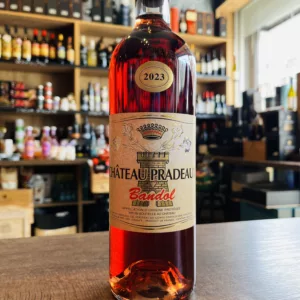 There is the appellation of Bandol with its plethora of producers, some good, some mediocre; and then there is Château Pradeaux, the unique, inimitable, standard-bearer for this ancient wine-growing district. The Château Pradeaux is situated on the outskirts of the town of Saint Cyr-sur-Mer that lies directly on the Mediterranean Ocean between Toulon and Marseilles. The estate has been in the hands of the Portalis family since before the French Revolution. The vineyards are cultivated in as natural a manner as possible with reliance on organic methods.
There is the appellation of Bandol with its plethora of producers, some good, some mediocre; and then there is Château Pradeaux, the unique, inimitable, standard-bearer for this ancient wine-growing district. The Château Pradeaux is situated on the outskirts of the town of Saint Cyr-sur-Mer that lies directly on the Mediterranean Ocean between Toulon and Marseilles. The estate has been in the hands of the Portalis family since before the French Revolution. The vineyards are cultivated in as natural a manner as possible with reliance on organic methods. -

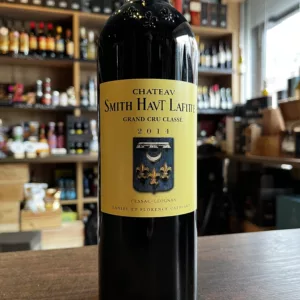 The vines of Château Smith Haut Lafitte are planted in a single block on a Günz gravel plateau in the Pessac-Léognan appellation, producing six different wines. Château Smith Haut Lafitte, a Graves Great Growth in both red and white, and our two second wines Les Hauts de Smith and Le Petit Haut Lafitte, also in red and white. Each has its own unique blend and distinctive aromatic profile.
The vines of Château Smith Haut Lafitte are planted in a single block on a Günz gravel plateau in the Pessac-Léognan appellation, producing six different wines. Château Smith Haut Lafitte, a Graves Great Growth in both red and white, and our two second wines Les Hauts de Smith and Le Petit Haut Lafitte, also in red and white. Each has its own unique blend and distinctive aromatic profile. -
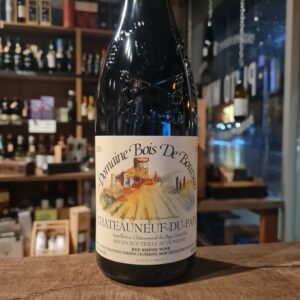 Domaine Bois de Boursan makes exemplary Châteauneuf-du-Pape in the Southern Rhône. This family-run estate was started by the Versino family in 1955, who moved across from Piedmont in Italy. It is now in the hands of Jean-Paul, the third generation at the helm. He takes great pride in continuing to make traditionally-styled reds with the belief that vinifying with stems and ageing the wine for extended periods in large oak foudres gives his wine its unique character. There is nothing flashy or opulent here, just wines with great character. In total, Jean-Paul has 10 hectares spread across 27 different parcels in Châteauneuf-du-Pape, with its changing soil types and vines up to 50 years old.
Domaine Bois de Boursan makes exemplary Châteauneuf-du-Pape in the Southern Rhône. This family-run estate was started by the Versino family in 1955, who moved across from Piedmont in Italy. It is now in the hands of Jean-Paul, the third generation at the helm. He takes great pride in continuing to make traditionally-styled reds with the belief that vinifying with stems and ageing the wine for extended periods in large oak foudres gives his wine its unique character. There is nothing flashy or opulent here, just wines with great character. In total, Jean-Paul has 10 hectares spread across 27 different parcels in Châteauneuf-du-Pape, with its changing soil types and vines up to 50 years old. -
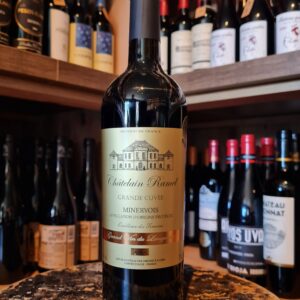 Dominated by Carignan, this is a Minervois which will wow the senses and really impress with its value for money. The fruit for the Ramel Grand Cuvee were sourced from the Domaine de la Baquiere Estate, within the heart of the Languedoc Wine Region. From 23 hectares of vineyard on the slopes of the Montagne Noire where the Ramel-Mazard family winemaking dates back to 1726, forming traditional methods of production, with the fruit harvested by hand and each grape variety vinified separately in stainless steel. This is a medium/full bodied with bright ruby edge. Interesting and attractive nose, sweet blackberry, plum notes with a smoky, meaty complexion. Cherry notes too. Medium weight palate with sweet blackberry fruit, mocha and cherry tones. Tannins are grippy but well balanced and the 14% alcohol well integrated. Would suit Duck very well, or slow cooked meats stew style dishes.
Dominated by Carignan, this is a Minervois which will wow the senses and really impress with its value for money. The fruit for the Ramel Grand Cuvee were sourced from the Domaine de la Baquiere Estate, within the heart of the Languedoc Wine Region. From 23 hectares of vineyard on the slopes of the Montagne Noire where the Ramel-Mazard family winemaking dates back to 1726, forming traditional methods of production, with the fruit harvested by hand and each grape variety vinified separately in stainless steel. This is a medium/full bodied with bright ruby edge. Interesting and attractive nose, sweet blackberry, plum notes with a smoky, meaty complexion. Cherry notes too. Medium weight palate with sweet blackberry fruit, mocha and cherry tones. Tannins are grippy but well balanced and the 14% alcohol well integrated. Would suit Duck very well, or slow cooked meats stew style dishes. -
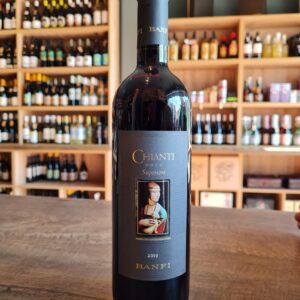 The Banfi Chianti Superiore begins with a very nice aroma of black cherry, plum, a little spice, a little earth and some nice floral notes. Tasting the wine reveals plum, oak,licorice a bit of spice, a nice dense and velvety texture plus dusty tannins = One Terrific Tuscan! Add in good acidity and balance on this medium-bodied wine and you quickly realize this wine is delivering great value for its price. The finish is very nice with good length and features some excellent slightly sour black cherry notes. Try with BBQ-marinated pork ribs, beef and vegetable skewers or T bone steaks. I am a big fan of Tuscan wines specially Banfi, would confidently recommend it.
The Banfi Chianti Superiore begins with a very nice aroma of black cherry, plum, a little spice, a little earth and some nice floral notes. Tasting the wine reveals plum, oak,licorice a bit of spice, a nice dense and velvety texture plus dusty tannins = One Terrific Tuscan! Add in good acidity and balance on this medium-bodied wine and you quickly realize this wine is delivering great value for its price. The finish is very nice with good length and features some excellent slightly sour black cherry notes. Try with BBQ-marinated pork ribs, beef and vegetable skewers or T bone steaks. I am a big fan of Tuscan wines specially Banfi, would confidently recommend it. -
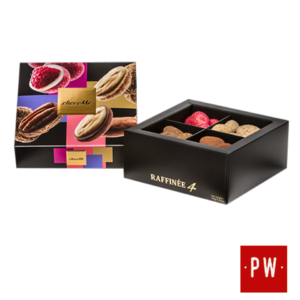 All the best Raffinée can offer in one exclusive selection - that's what Raffinée 4 is all about. We put together this diverse assortment of four of our most characteristic, multiple award-winning creations, reviewed by professional jury teams, for your enjoyment. Almonds from Avola coated with milk chocolate and tonka beans Freeze-dried raspberry coated with white chocolate Sicilian almonds coated with Guérande salty blonde chocolate and crispy wafer Pecans covered in milk chocolate mixed with caramel and salted vanilla powder from Tahiti
All the best Raffinée can offer in one exclusive selection - that's what Raffinée 4 is all about. We put together this diverse assortment of four of our most characteristic, multiple award-winning creations, reviewed by professional jury teams, for your enjoyment. Almonds from Avola coated with milk chocolate and tonka beans Freeze-dried raspberry coated with white chocolate Sicilian almonds coated with Guérande salty blonde chocolate and crispy wafer Pecans covered in milk chocolate mixed with caramel and salted vanilla powder from Tahiti -
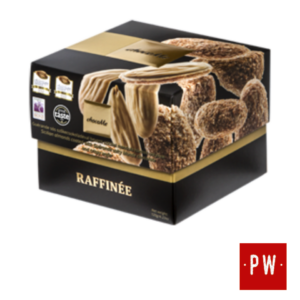 The thin, long almonds from Sicily are creamy and free of any sourness in aftertaste. We mix them with crispy wafer and give them a blonde chocolate bath, through which they acquire the elementary characteristic caramel notes thanks to the Guérande salt. We roll the almonds with a thin layer of wafer, to make them even more crispy.
The thin, long almonds from Sicily are creamy and free of any sourness in aftertaste. We mix them with crispy wafer and give them a blonde chocolate bath, through which they acquire the elementary characteristic caramel notes thanks to the Guérande salt. We roll the almonds with a thin layer of wafer, to make them even more crispy. -
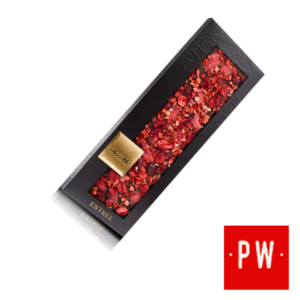 At chocoMe (founded in 2010) we create each and every one of our products with the utmost dedication and expertise. Together with our team of 30 we strive for the highest quality every day, which is made possible by passion, humility, top-shelf ingredients, and continuous innovation. We are proud of the fact that our chocolates are made by hand in our own manufactory, one by one, and every year they bring home prestigious awards from the most important, international chocolate competitions. It is also a great honor that we can be present in 28 countries, with nearly 100 types of products, in more than 1,000 partner stores around the globe. Our goal is that each box of our chocolates reaches its destination with the highest quality and in the perfect condition, making everyone smile: doesn’t matter if it goes to the neighboring street or to the other side of the world!
At chocoMe (founded in 2010) we create each and every one of our products with the utmost dedication and expertise. Together with our team of 30 we strive for the highest quality every day, which is made possible by passion, humility, top-shelf ingredients, and continuous innovation. We are proud of the fact that our chocolates are made by hand in our own manufactory, one by one, and every year they bring home prestigious awards from the most important, international chocolate competitions. It is also a great honor that we can be present in 28 countries, with nearly 100 types of products, in more than 1,000 partner stores around the globe. Our goal is that each box of our chocolates reaches its destination with the highest quality and in the perfect condition, making everyone smile: doesn’t matter if it goes to the neighboring street or to the other side of the world! -
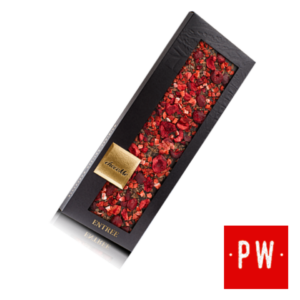 At chocoMe (founded in 2010) we create each and every one of our products with the utmost dedication and expertise. Together with our team of 30 we strive for the highest quality every day, which is made possible by passion, humility, top-shelf ingredients, and continuous innovation. We are proud of the fact that our chocolates are made by hand in our own manufactory, one by one, and every year they bring home prestigious awards from the most important, international chocolate competitions. It is also a great honor that we can be present in 28 countries, with nearly 100 types of products, in more than 1,000 partner stores around the globe. Our goal is that each box of our chocolates reaches its destination with the highest quality and in the perfect condition, making everyone smile: doesn’t matter if it goes to the neighboring street or to the other side of the world!
At chocoMe (founded in 2010) we create each and every one of our products with the utmost dedication and expertise. Together with our team of 30 we strive for the highest quality every day, which is made possible by passion, humility, top-shelf ingredients, and continuous innovation. We are proud of the fact that our chocolates are made by hand in our own manufactory, one by one, and every year they bring home prestigious awards from the most important, international chocolate competitions. It is also a great honor that we can be present in 28 countries, with nearly 100 types of products, in more than 1,000 partner stores around the globe. Our goal is that each box of our chocolates reaches its destination with the highest quality and in the perfect condition, making everyone smile: doesn’t matter if it goes to the neighboring street or to the other side of the world! -
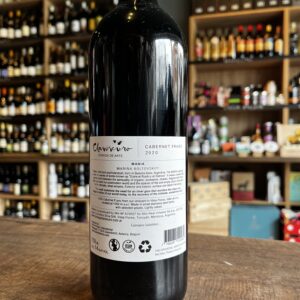
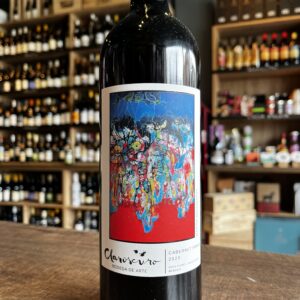 The grapes come from our single vineyard located in Vista Flores, Tunuyán, Uco Valley at 1054 m.a.s.l. (3428 ft). We have a sandy loam soil in the higher levels of the vineyard and stones in the lower parts so we can divide the vineyard into parcels thus generating greater diversity. This allows us to produce a greater variety of wines from the same vineyard. The drip irrigation system in our vineyard sources from the snowmelting of the high peaks
The grapes come from our single vineyard located in Vista Flores, Tunuyán, Uco Valley at 1054 m.a.s.l. (3428 ft). We have a sandy loam soil in the higher levels of the vineyard and stones in the lower parts so we can divide the vineyard into parcels thus generating greater diversity. This allows us to produce a greater variety of wines from the same vineyard. The drip irrigation system in our vineyard sources from the snowmelting of the high peaks -
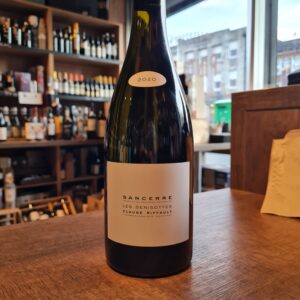 Stéphane Riffault (Claude’s son and now the owner of the estate) is turning out Sancerre bottlings that are the envy of many producers twice his age. As David Schildknecht put it, “Make no mistake: this address in the hamlet of Maison Salle (Sury-en-Vaux) is now one of the five or six most exciting estates in the Sancerre appellation.” Given that Stephane’s holdings represent 4-tenths of 1 percent of the appellation, he is clearly doing something right. Based in the village of Sury-en-Vaux, Stéphane Riffault works 33 different parcels in 8 different lieu-dits spread across four villages. The 13.5 hectares of vines are plowed, and no synthetic material is used. Starting in 2017, the property has been certified organic by ECOCERT and biodynamic by BIODYVIN. Unlike most Sancerre producers, the entire harvest is carried out by hand, and extensive sorting occurs before the grapes are crushed. Stéphane’s wife, Benedicte, leads the harvest team while Stéphane manages the sorting and press during harvest. Most of the domaine’s holdings are planted on the soft limestone soil called terres blanches, with some parcels on calliottes and silex. Minor, judicious uses of oak help to add length to the already precise, site-expressive, and vertical bottlings. All the parcels are vinified separately, and except for the rosé, all the wines are bottled unfiltered. Having studied and worked in Burgundy (and closely with Olivier Leflaive), it’s easy to see the Burgundian influence in Stéphane’s wines. The mastery of minerality standing shoulder–height with the wood is rarely duplicated in Sancerre. Regardless of his parcels’ exposition (many are south-facing), Riffault’s wines are always crisp and highcut with a jeweled delineation that speaks to the precision and attention these wines get. These are not your daddy’s (or his daddy, Claude’s) Sancerres. Sancerre Les Denisottes Les Denisottes comes from a lieu-dit located quite close to the domaine’s cellar. Here the terres blanches soils are deeper and more pebbly than rocky and producing a richer style of Sancerre – one that requires a longer élevage in barrel, and released with a greater capacity to age.
Stéphane Riffault (Claude’s son and now the owner of the estate) is turning out Sancerre bottlings that are the envy of many producers twice his age. As David Schildknecht put it, “Make no mistake: this address in the hamlet of Maison Salle (Sury-en-Vaux) is now one of the five or six most exciting estates in the Sancerre appellation.” Given that Stephane’s holdings represent 4-tenths of 1 percent of the appellation, he is clearly doing something right. Based in the village of Sury-en-Vaux, Stéphane Riffault works 33 different parcels in 8 different lieu-dits spread across four villages. The 13.5 hectares of vines are plowed, and no synthetic material is used. Starting in 2017, the property has been certified organic by ECOCERT and biodynamic by BIODYVIN. Unlike most Sancerre producers, the entire harvest is carried out by hand, and extensive sorting occurs before the grapes are crushed. Stéphane’s wife, Benedicte, leads the harvest team while Stéphane manages the sorting and press during harvest. Most of the domaine’s holdings are planted on the soft limestone soil called terres blanches, with some parcels on calliottes and silex. Minor, judicious uses of oak help to add length to the already precise, site-expressive, and vertical bottlings. All the parcels are vinified separately, and except for the rosé, all the wines are bottled unfiltered. Having studied and worked in Burgundy (and closely with Olivier Leflaive), it’s easy to see the Burgundian influence in Stéphane’s wines. The mastery of minerality standing shoulder–height with the wood is rarely duplicated in Sancerre. Regardless of his parcels’ exposition (many are south-facing), Riffault’s wines are always crisp and highcut with a jeweled delineation that speaks to the precision and attention these wines get. These are not your daddy’s (or his daddy, Claude’s) Sancerres. Sancerre Les Denisottes Les Denisottes comes from a lieu-dit located quite close to the domaine’s cellar. Here the terres blanches soils are deeper and more pebbly than rocky and producing a richer style of Sancerre – one that requires a longer élevage in barrel, and released with a greater capacity to age.


